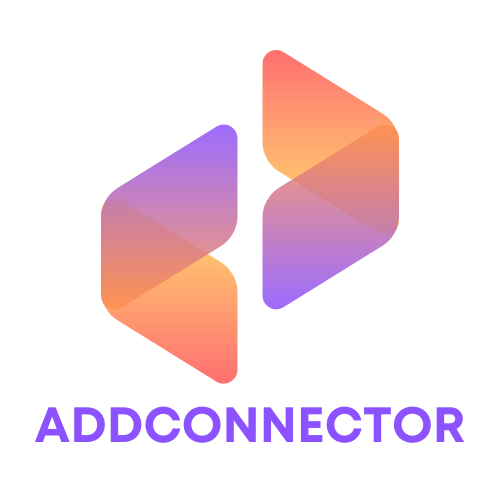In the vast digital landscape, web architecture is the unsung hero that keeps everything from collapsing like a house of cards. Imagine navigating a maze where every turn leads you to a dead end. That’s what a poorly designed website feels like. With the right web architecture, users glide effortlessly through content, making their experience not just enjoyable but memorable.
But it’s not just about aesthetics. Good web architecture is like a solid foundation for a skyscraper—it supports functionality and scalability. Whether it’s an e-commerce site or a personal blog, understanding the principles of web architecture can transform a simple webpage into a digital powerhouse. So, buckle up as we dive into the nuts and bolts of this essential topic and discover how to build a website that not only looks great but performs like a well-oiled machine.
Table of Contents
ToggleOverview Of Web Architecture
Web architecture refers to the structural design of websites and web applications. This concept encompasses various components, including servers, databases, and user interfaces. Such an architecture ensures that users access content efficiently and navigate seamlessly.
A well-structured web architecture supports both functionality and scalability. Scalability allows websites to handle increased traffic without compromising performance. Functionality ensures that every feature serves a specific purpose, enhancing the overall user experience.
Different models exist to implement web architecture. Client-server architecture separates tasks between service providers and users. This separation enables better resource management and improved performance. Three-tier architecture adds another dimension by introducing presentation, application, and database layers. Each layer plays a distinct role, allowing for modular development and easier maintenance.
Coding standards and frameworks greatly influence web architecture. Using established frameworks reduces development time and increases code reliability. Additionally, adopting industry best practices ensures compatibility across various devices and platforms.
Security is another key consideration in web architecture. Implementing measures such as data encryption and secure authentication protects user information. Regular security audits help identify vulnerabilities, contributing to safer browsing experiences.
Different types of websites, from e-commerce platforms to personal blogs, benefit from tailored web architecture. Each type requires specific features and optimizations to deliver the desired user experience. By understanding the underlying principles of web architecture, developers can create dynamic websites that meet diverse user needs.
Key Components Of Web Architecture

Web architecture consists of critical components that facilitate the development and operation of websites and applications. Understanding these components enhances a developer’s ability to create effective, user-friendly solutions.
Client-Server Model
The client-server model serves as the foundation of web architecture. In this setup, clients make requests for resources, while servers process these requests and deliver the necessary data. This separation of roles allows for efficient resource management and reduces server load. A user’s device can function as a client, while servers host applications and data. Effective implementation ensures optimal performance and scalability, allowing systems to handle increased traffic seamlessly.
APIs And Microservices
APIs and microservices play a significant role in modern web architecture. APIs act as intermediaries that enable different software components to communicate, allowing developers to integrate various functionalities. Microservices, on the other hand, break down applications into smaller, independent services that can be developed and deployed separately. This modularity enhances flexibility and allows teams to work on individual components simultaneously. As a result, both APIs and microservices improve overall system resilience and adaptability.
Databases And Data Storage
Databases and data storage solutions underpin web architecture by providing a structured way to store, retrieve, and manage data. Different database types, such as relational and NoSQL, cater to various data requirements and use cases. Efficient data storage enables rapid access to information, which is vital for user experience. Database design considerations, such as normalization and indexing, optimize performance and ensure data integrity. Furthermore, data security measures protect sensitive information from unauthorized access, contributing to a trustworthy environment for users.
Types Of Web Architecture
Web architecture can be categorized into distinct types, each serving different purposes and offering unique advantages.
Monolithic Architecture
Monolithic architecture involves building an application as a single unit. This type has all components tightly integrated, making deployment and management relatively straightforward. Developers often find it simpler to implement and maintain a monolith for smaller applications or startups. However, scalability can be challenging as the application grows, leading to increased load times and complexity. Changes in a monolithic system may require redeployment of the entire application, which could affect uptime.
Service-Oriented Architecture
Service-oriented architecture (SOA) focuses on designing applications as a collection of services. These services communicate over a network, promoting flexibility and reuse. Each service performs a specific function, allowing teams to develop and deploy independently. SOA supports integration with multiple platforms and technologies, enhancing interoperability. While this architecture can reduce development time for large projects, it may introduce complexity in service management and call overhead due to network interactions.
Microservices Architecture
Microservices architecture represents a more granular approach, dividing applications into smaller, independent services. Each service focuses on a specific task, allowing for faster development cycles and improved scalability. Teams can develop, update, and deploy services individually, increasing overall agility. Microservices also facilitate better resource allocation, as services can be scaled independently based on demand. However, managing numerous microservices can lead to challenges, like network latency and consistent data management across services.
Best Practices For Designing Web Architecture
Designing web architecture requires attention to scalability and security. These essential practices ensure that a website performs effectively under various demands.
Scalability Considerations
Scalability involves planning for future growth in user traffic and data volume. Developers prioritize flexible architectures that accommodate changes without major overhauls. Vertical scaling enhances a system’s capabilities by adding resources to existing servers, while horizontal scaling distributes the load across multiple servers. Caching strategies, like utilizing content delivery networks (CDNs), improve response times by serving content closer to users. Database sharding can also optimize performance by partitioning data across several databases. Choosing the right architecture type, like microservices, often facilitates easier scalability over time.
Security Measures
Security must remain a top priority throughout web architecture design. Implementing SSL encryption protects user data during transmission. Regular security audits identify potential vulnerabilities early. Incorporating robust authentication processes, such as two-factor authentication, ensures that only authorized users access sensitive areas. Firewalls and intrusion detection systems provide additional layers of protection against attacks. Lastly, adhering to security best practices, including regular software updates, enhances overall safety and reduces risks for both users and developers.
Effective web architecture is essential for building robust and user-friendly websites. By focusing on scalability and security developers can create platforms that not only meet current demands but also adapt to future growth. Understanding the various architectural models and best practices allows teams to tailor their approaches to specific needs.
As technology continues to evolve the importance of a well-structured web architecture will only increase. Investing time and resources into proper design can lead to significant long-term benefits in performance and user satisfaction. Ultimately a solid web architecture lays the groundwork for successful online experiences that resonate with users.



